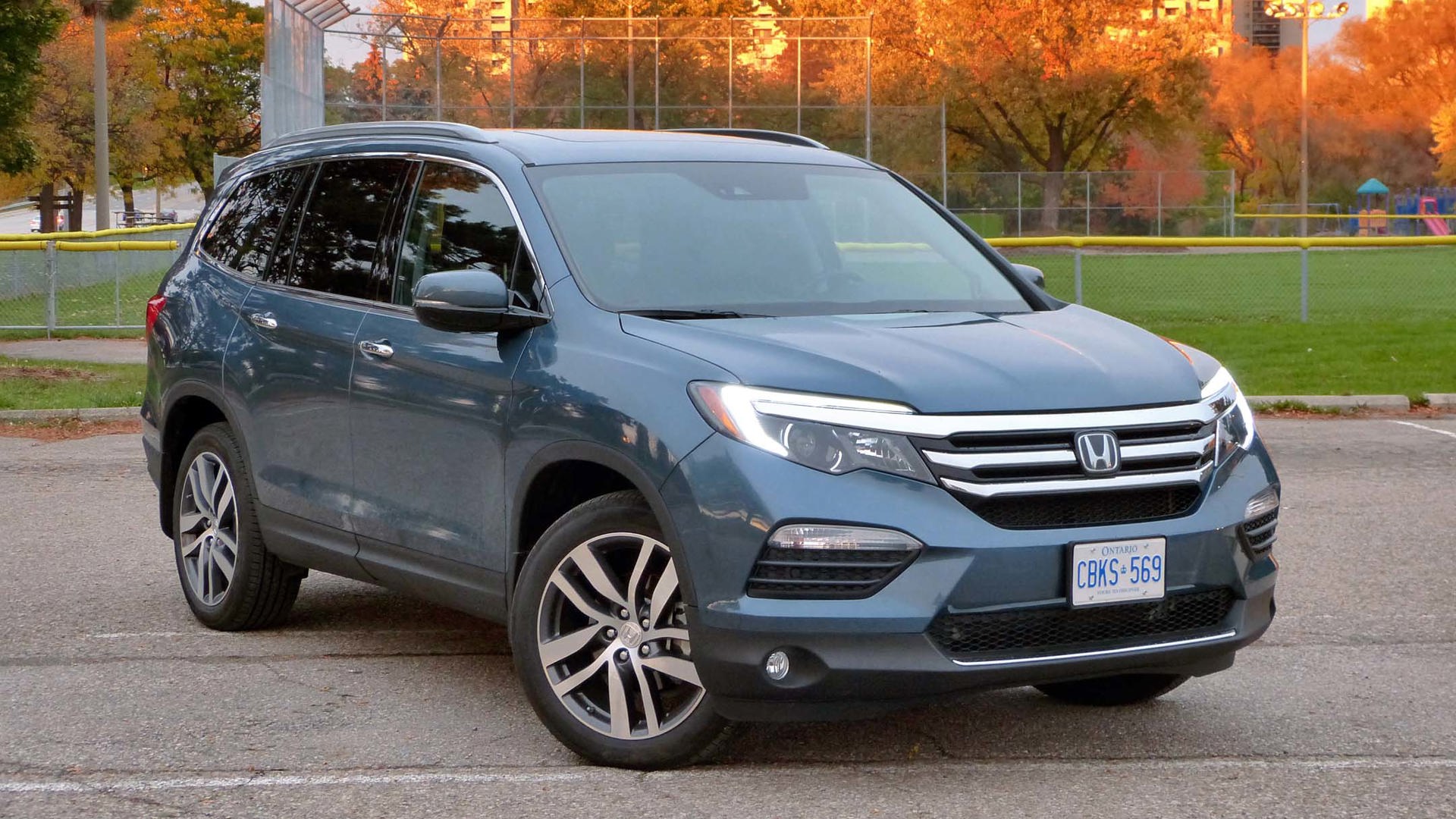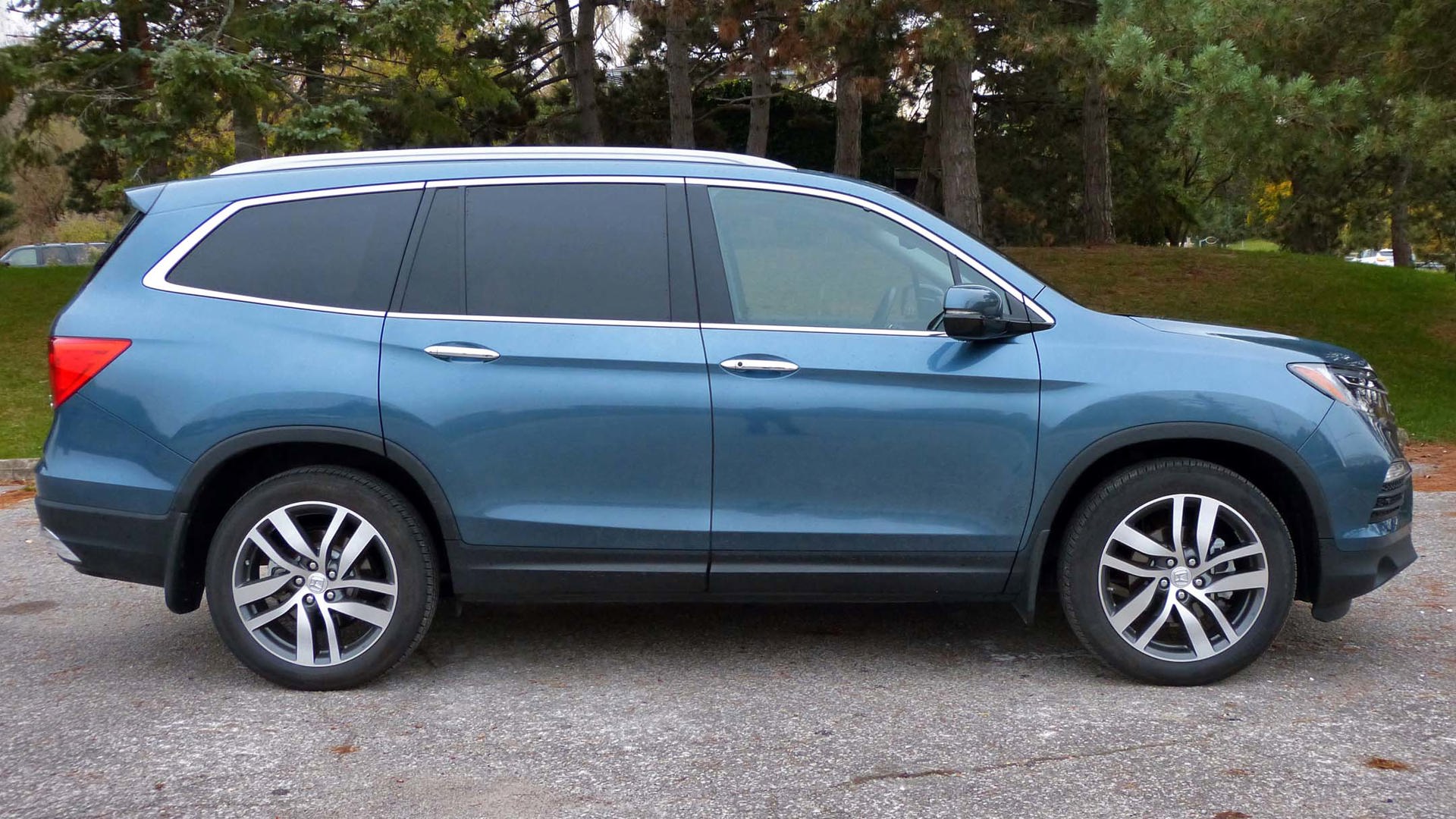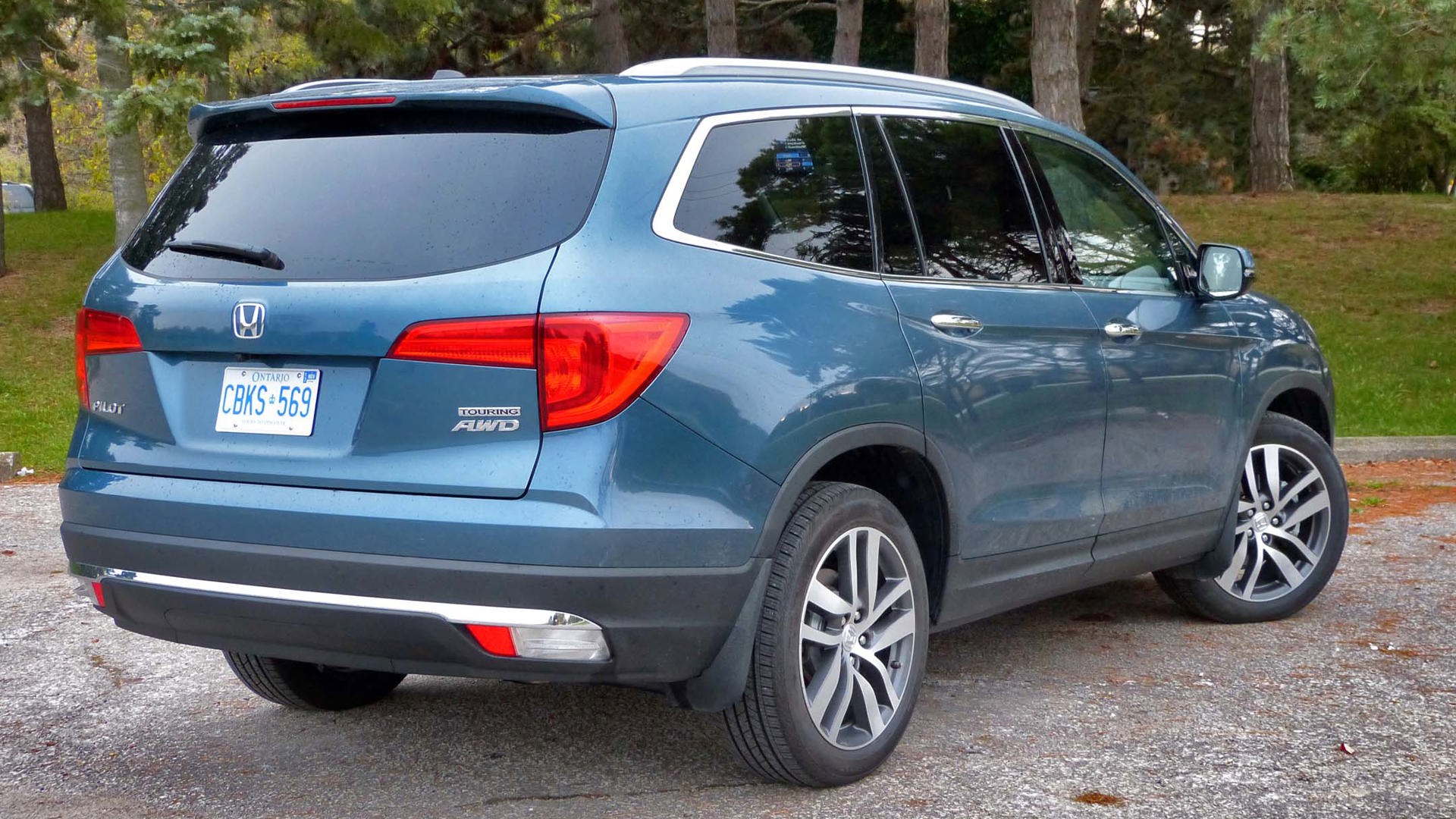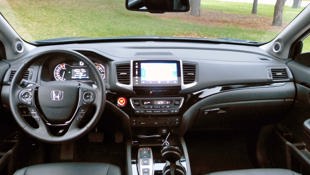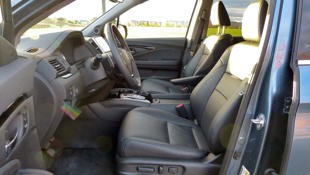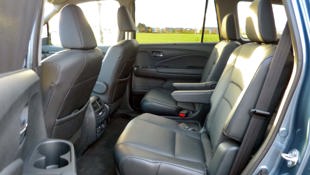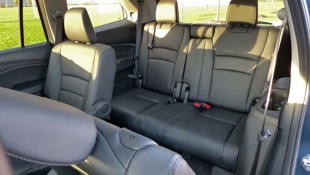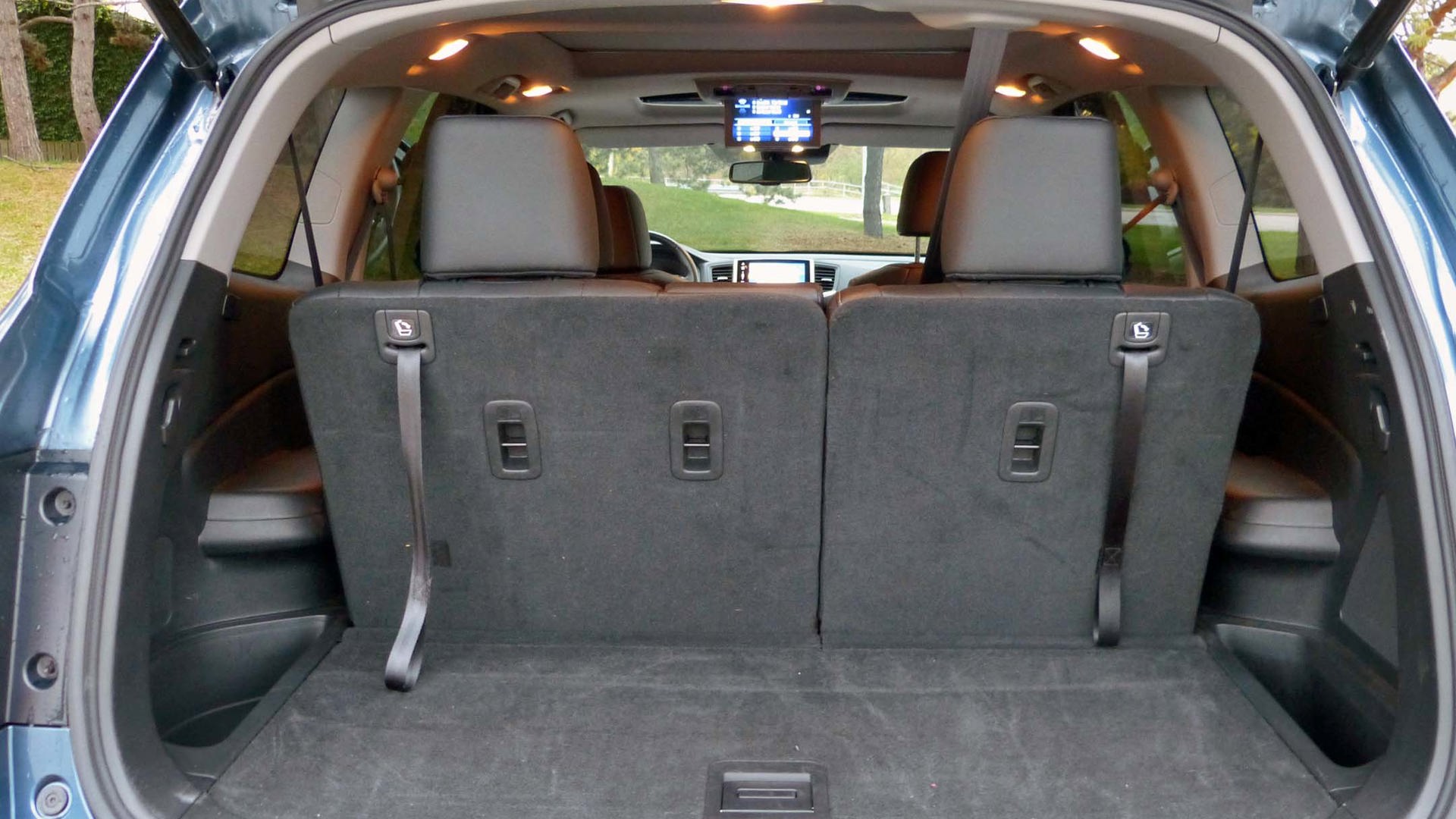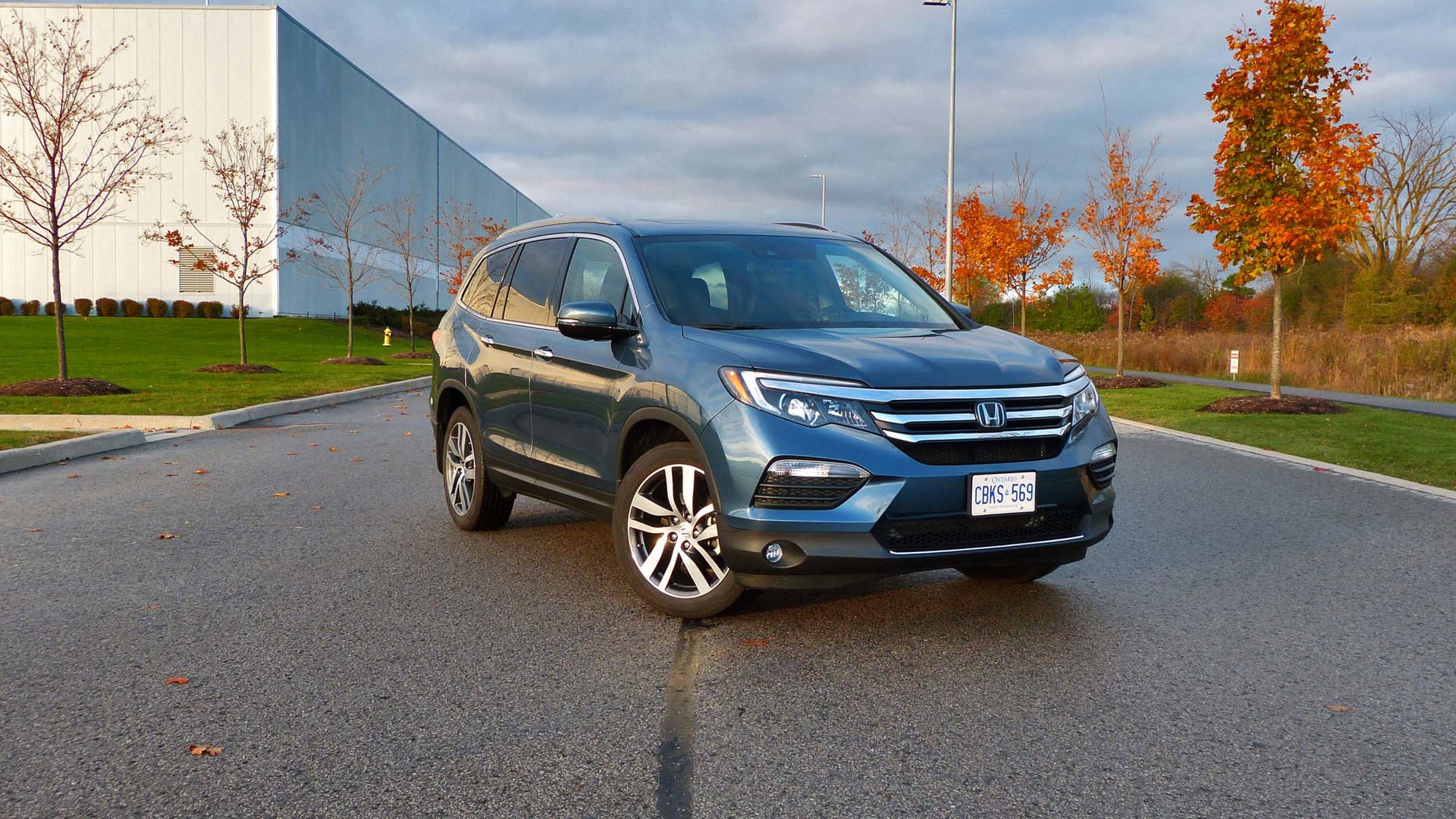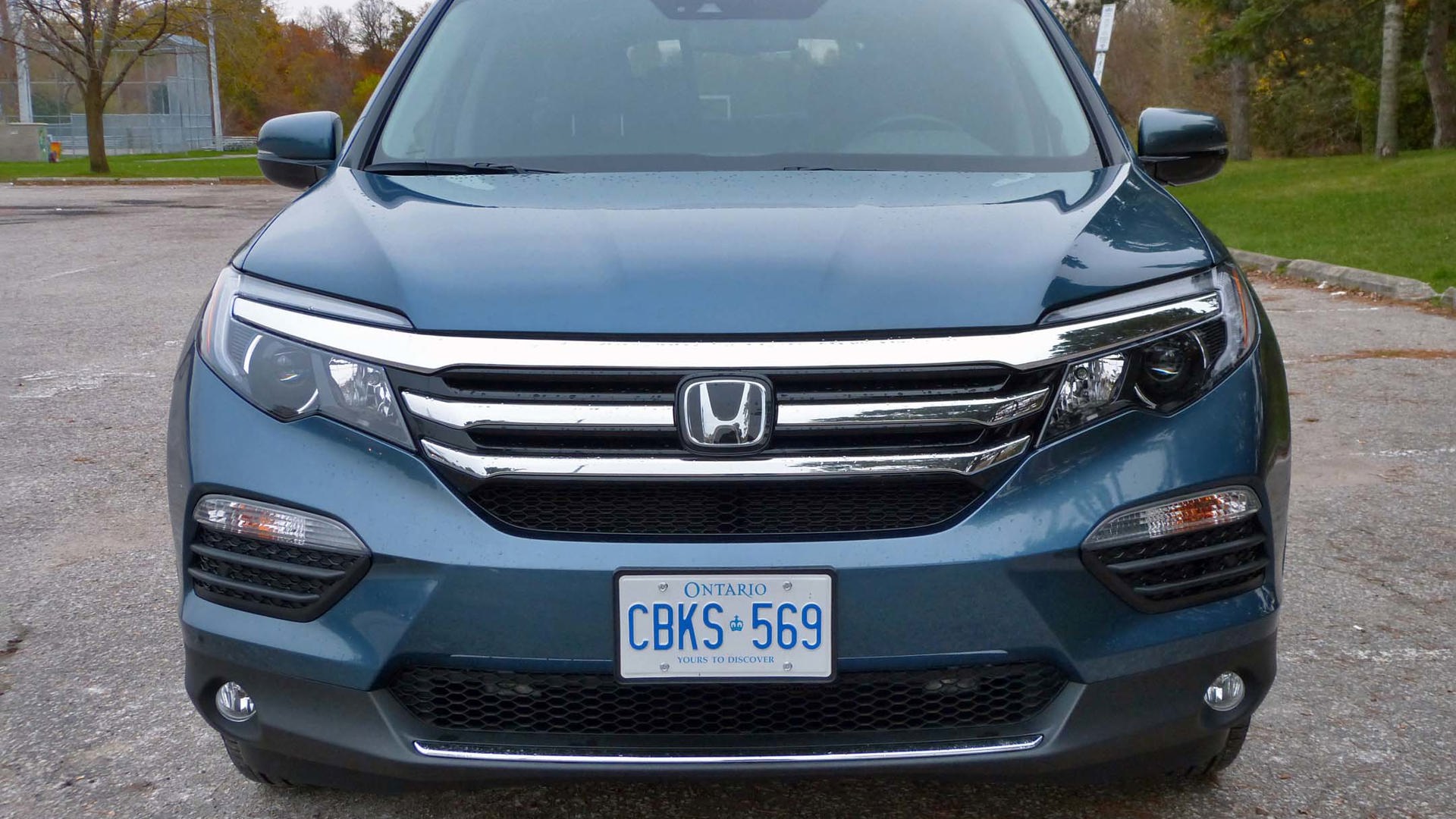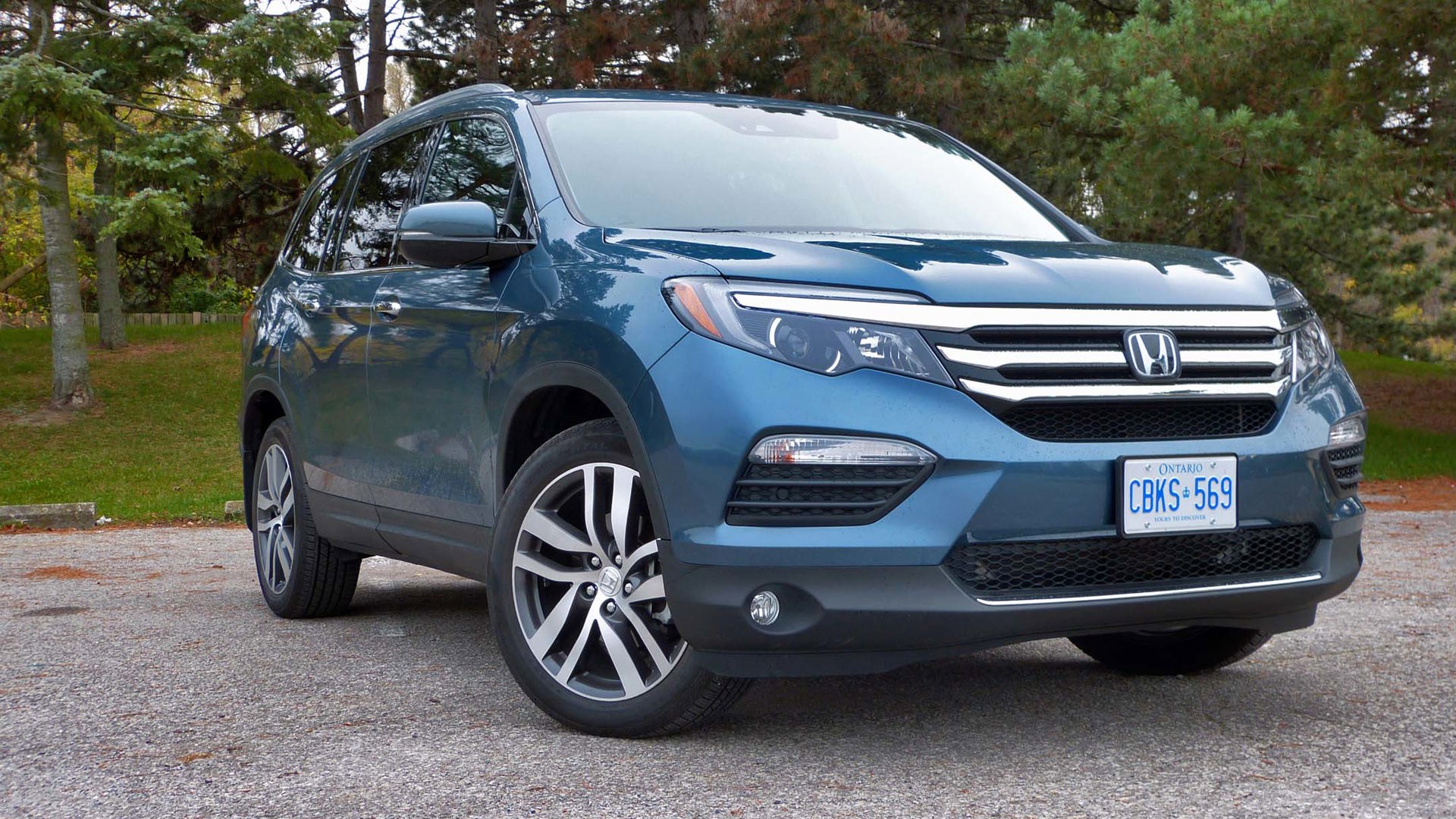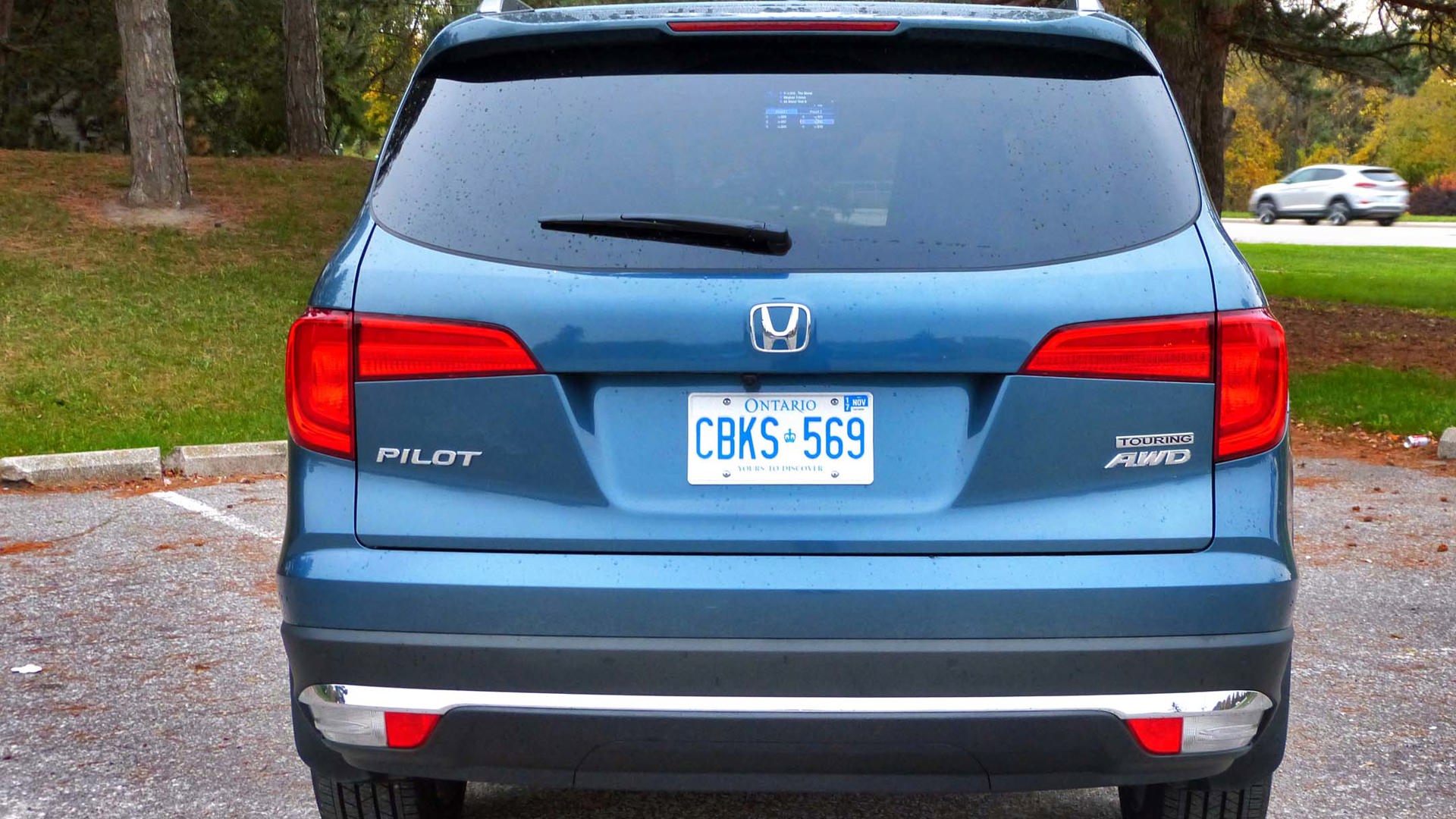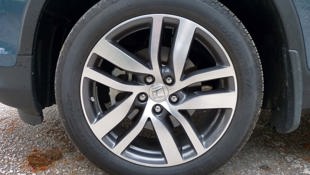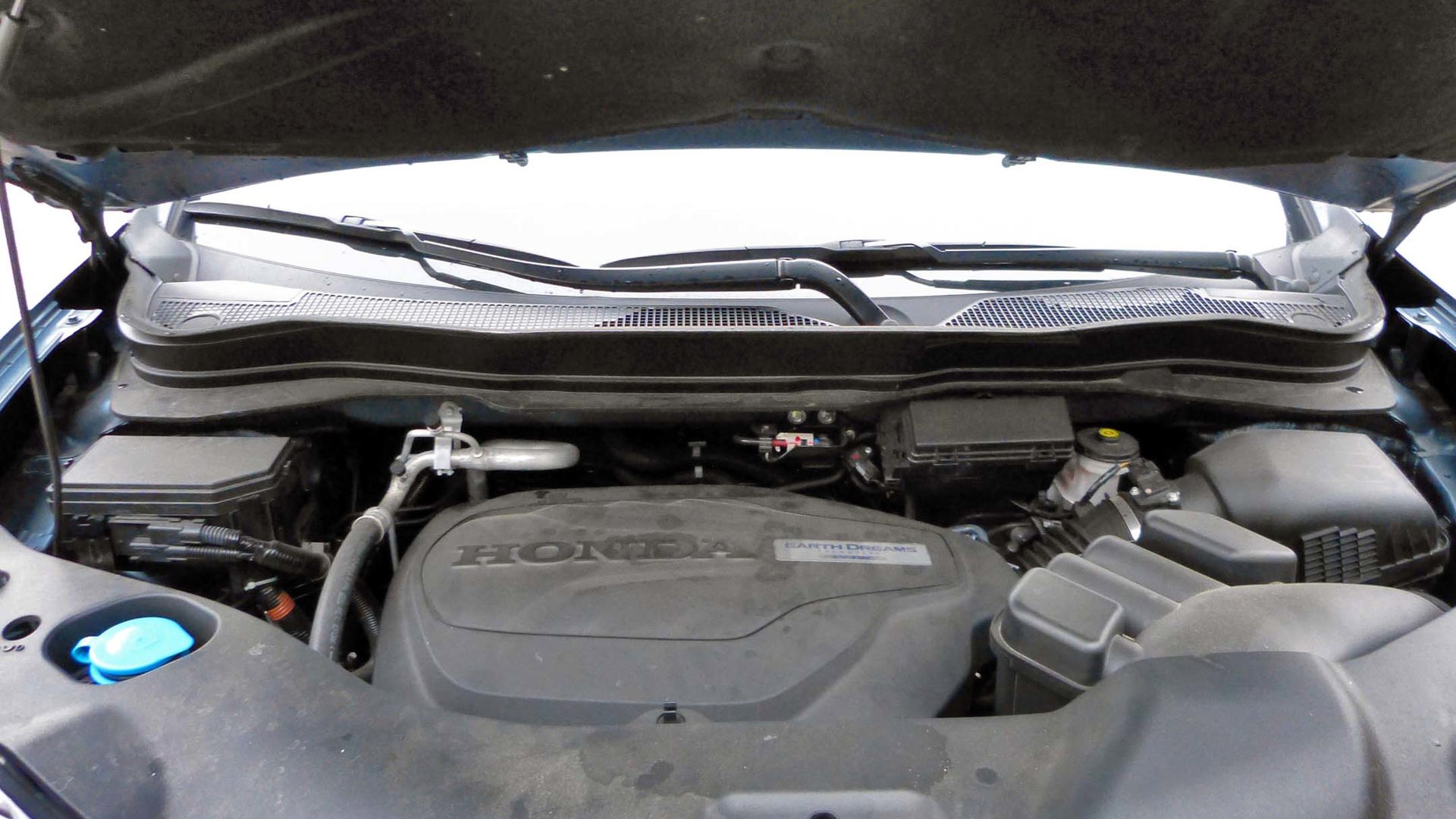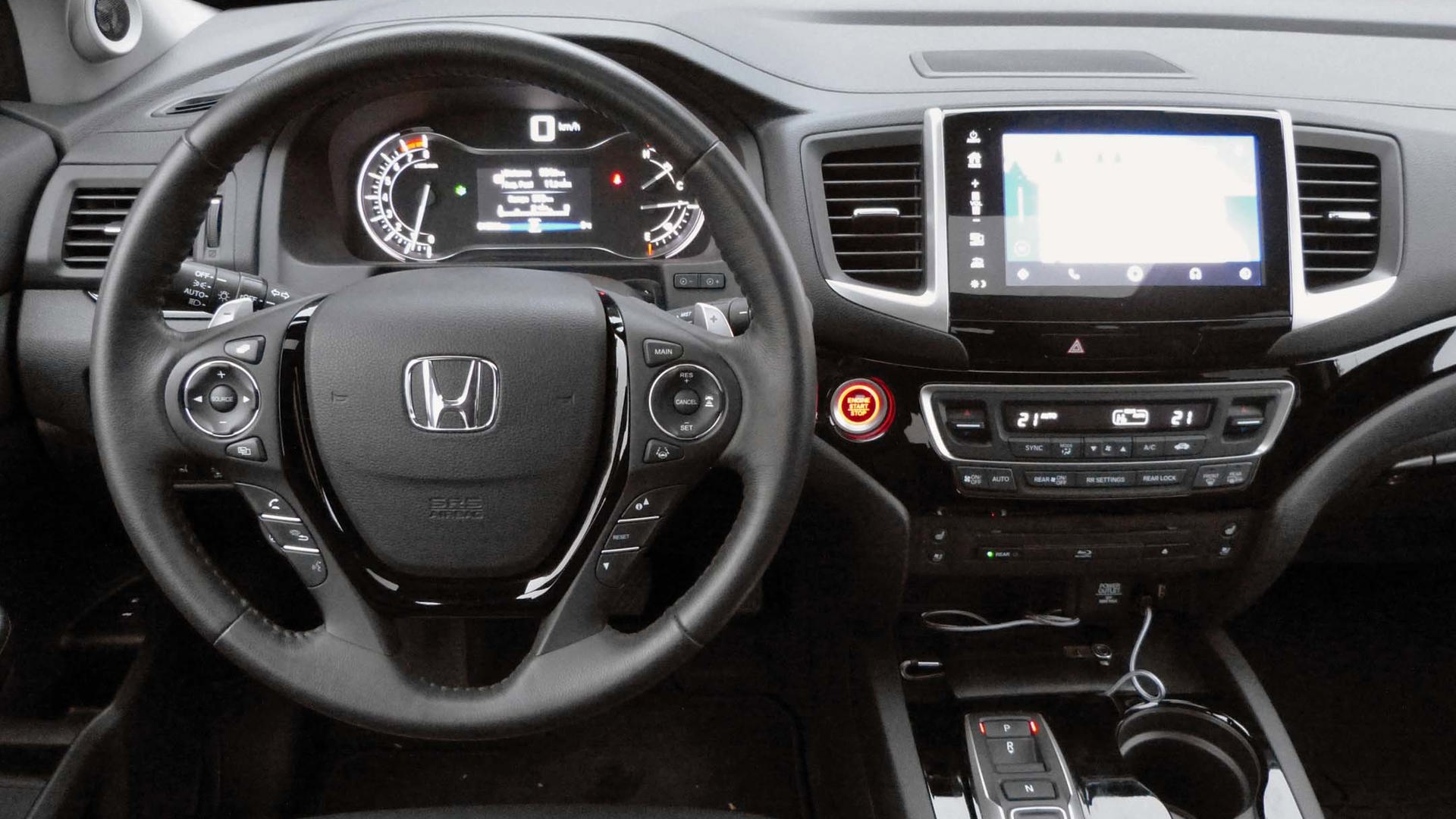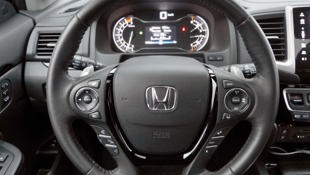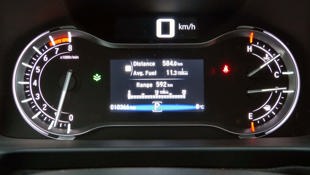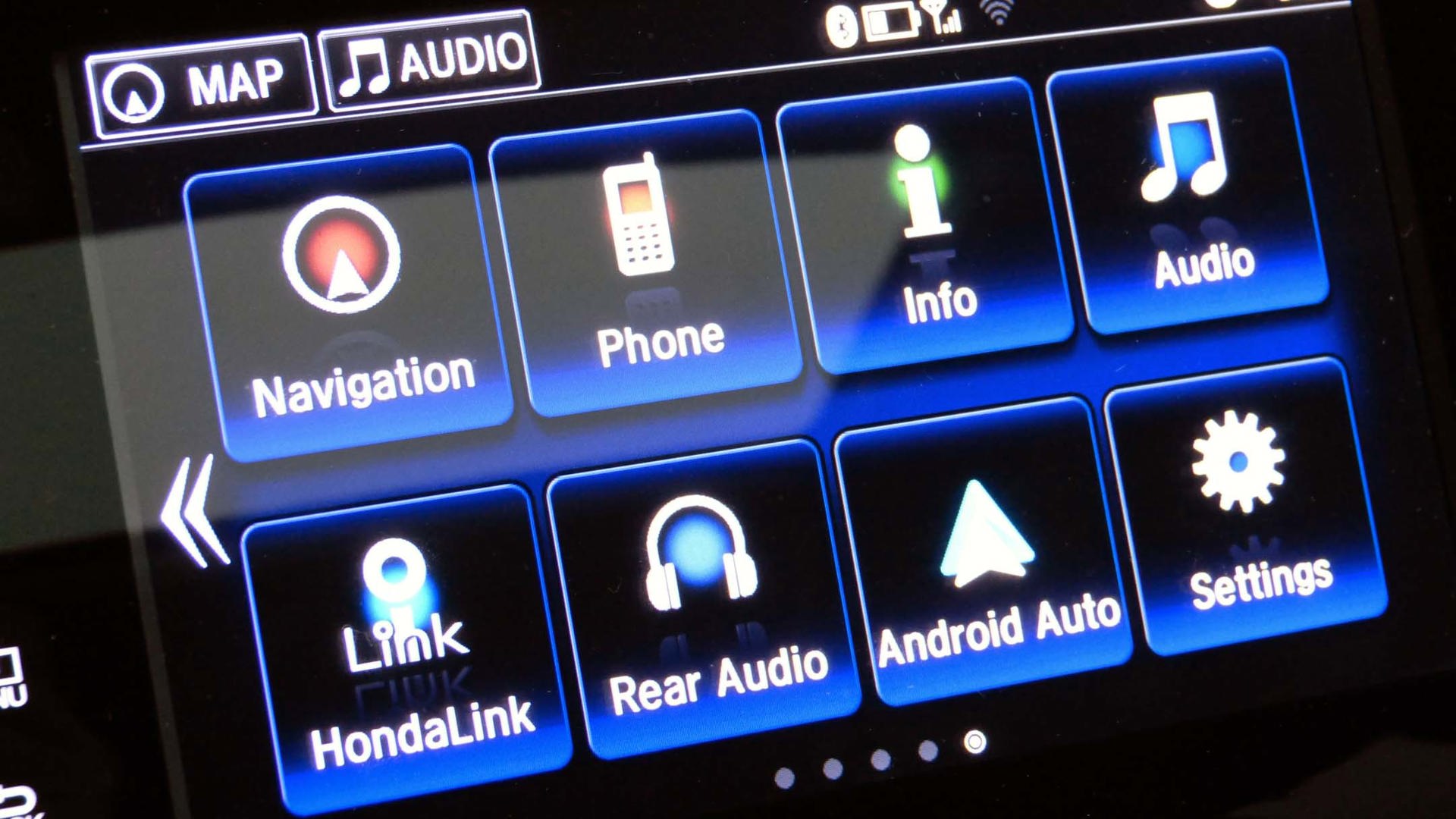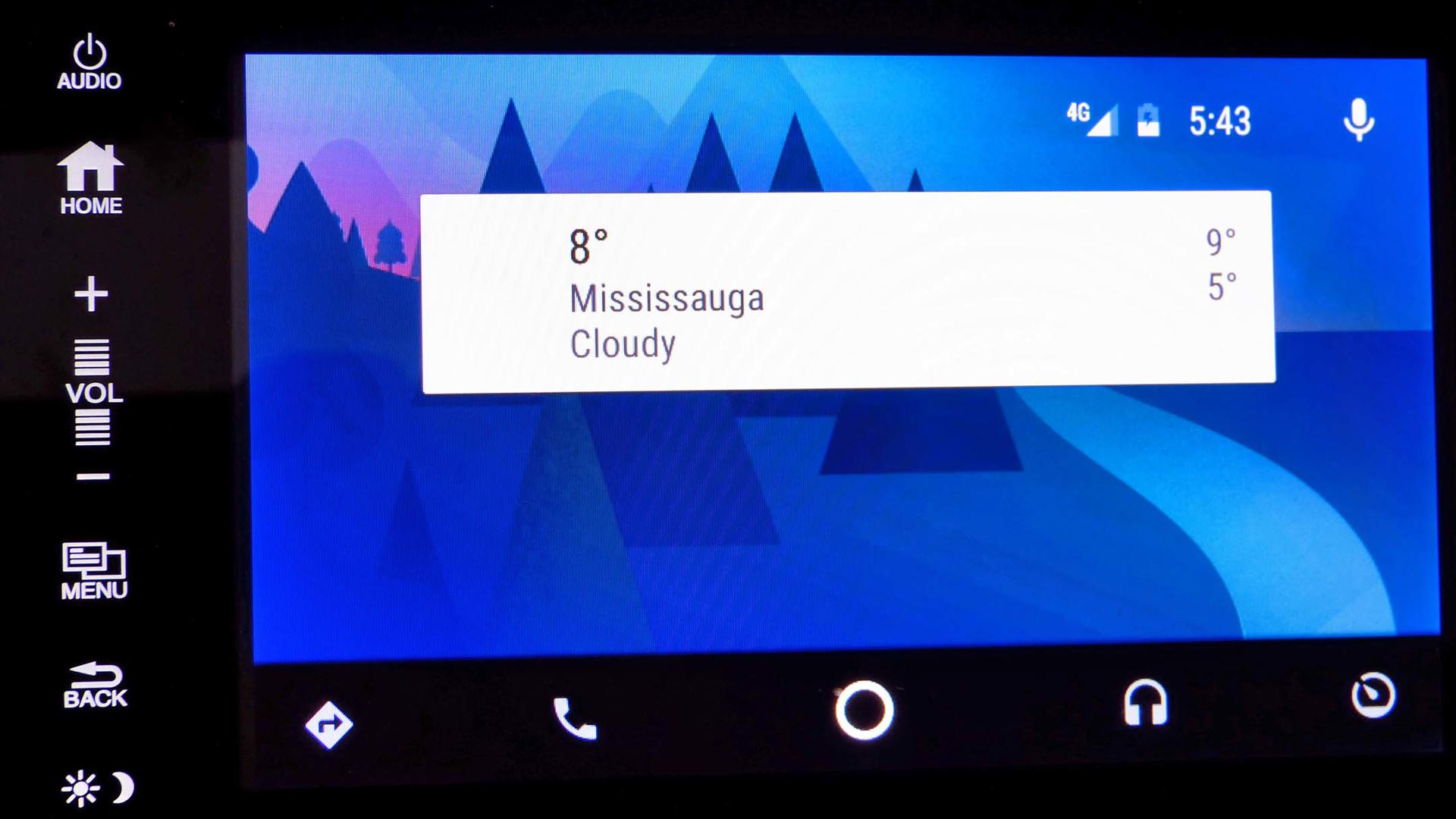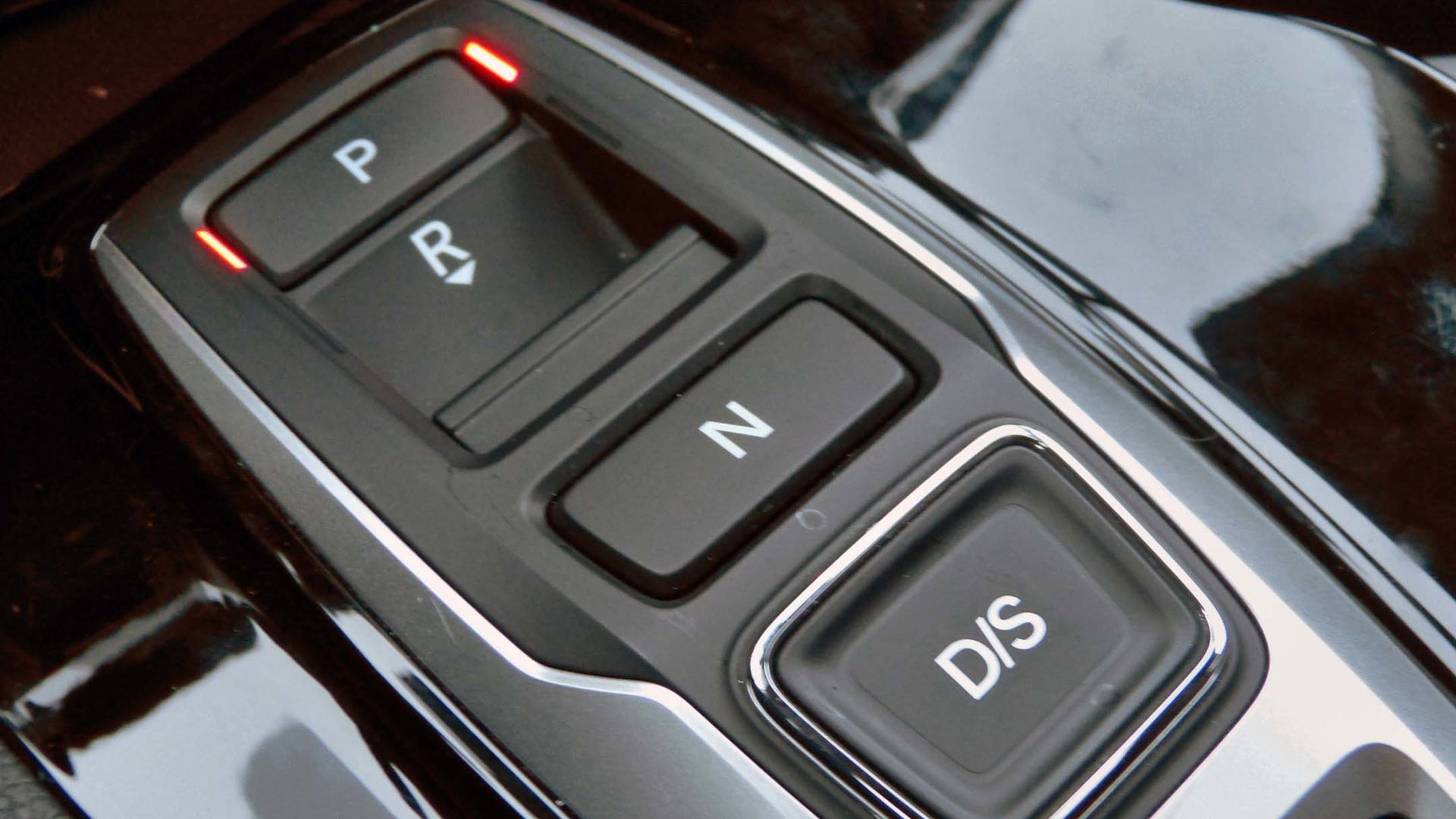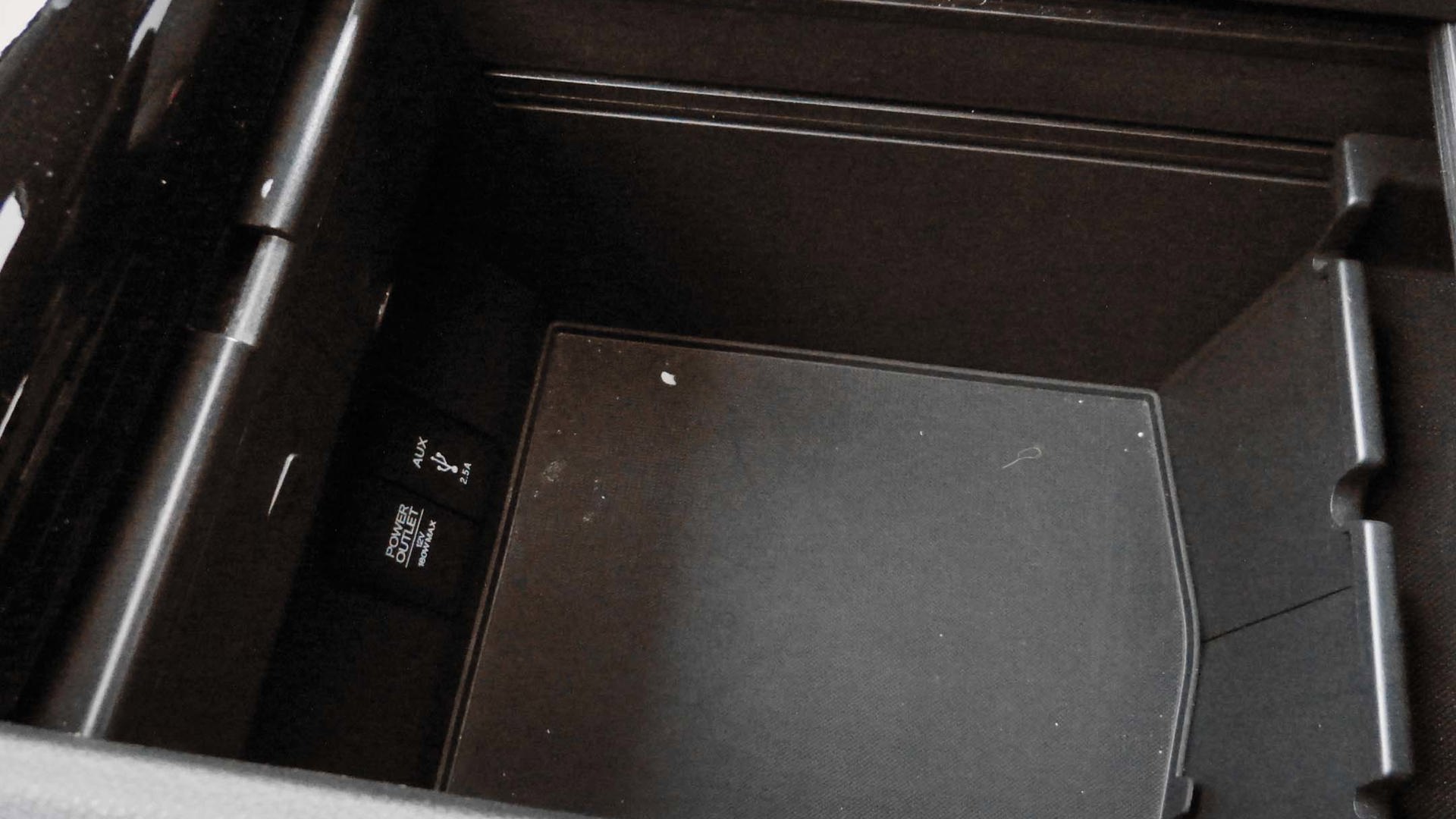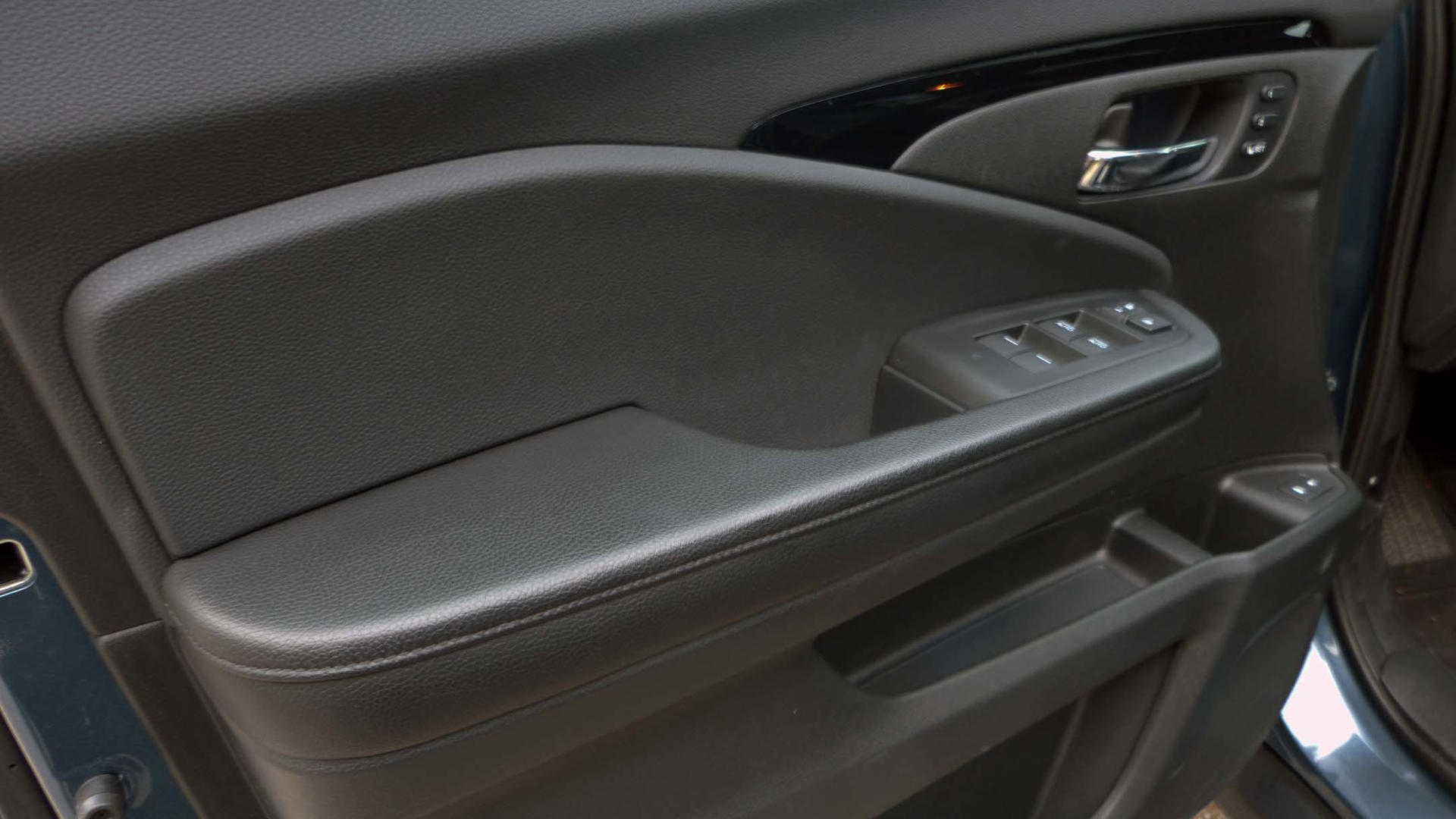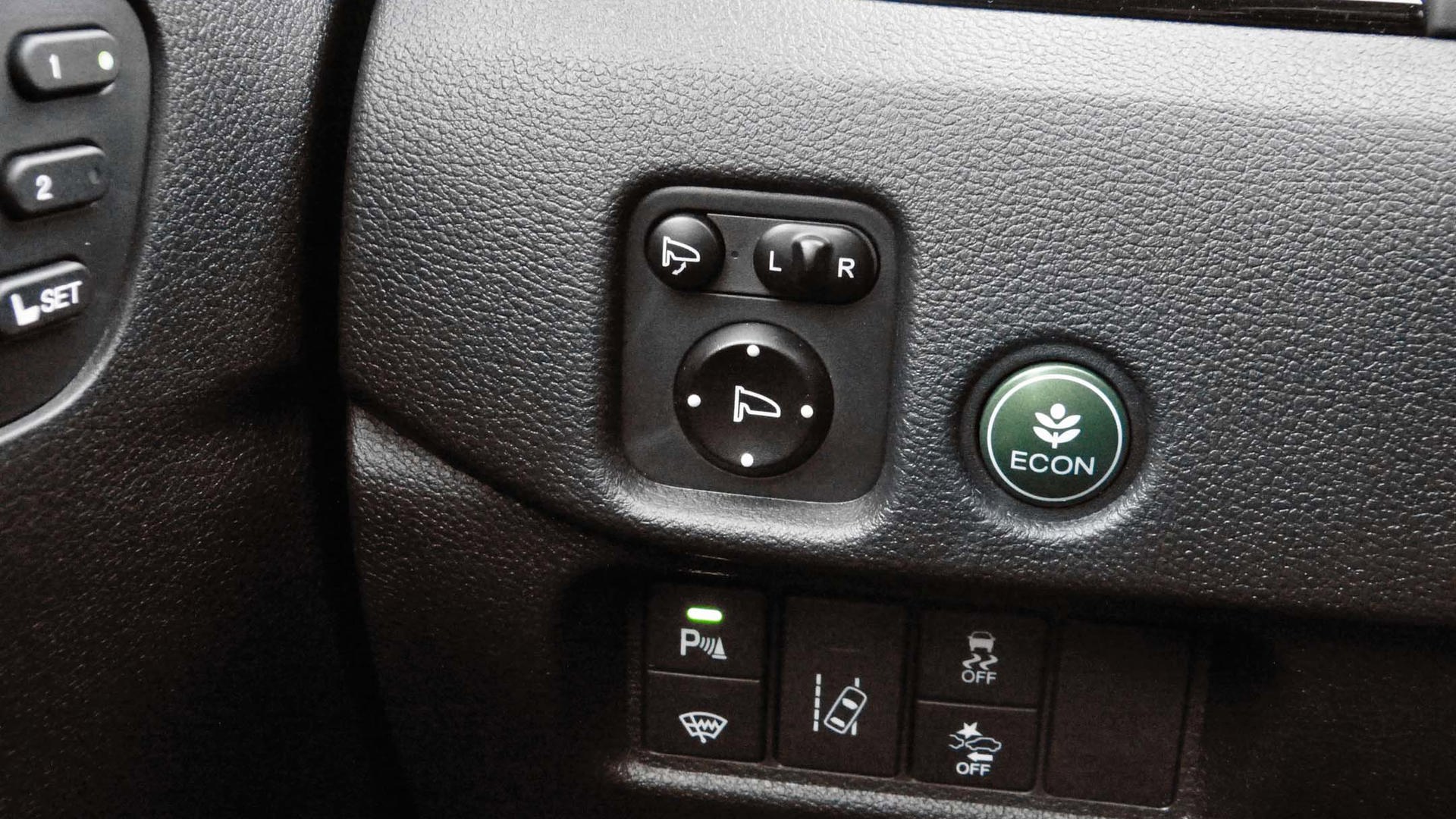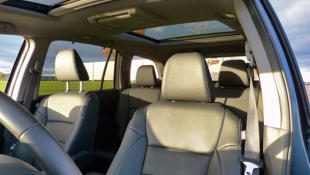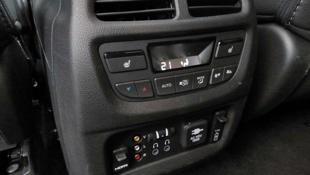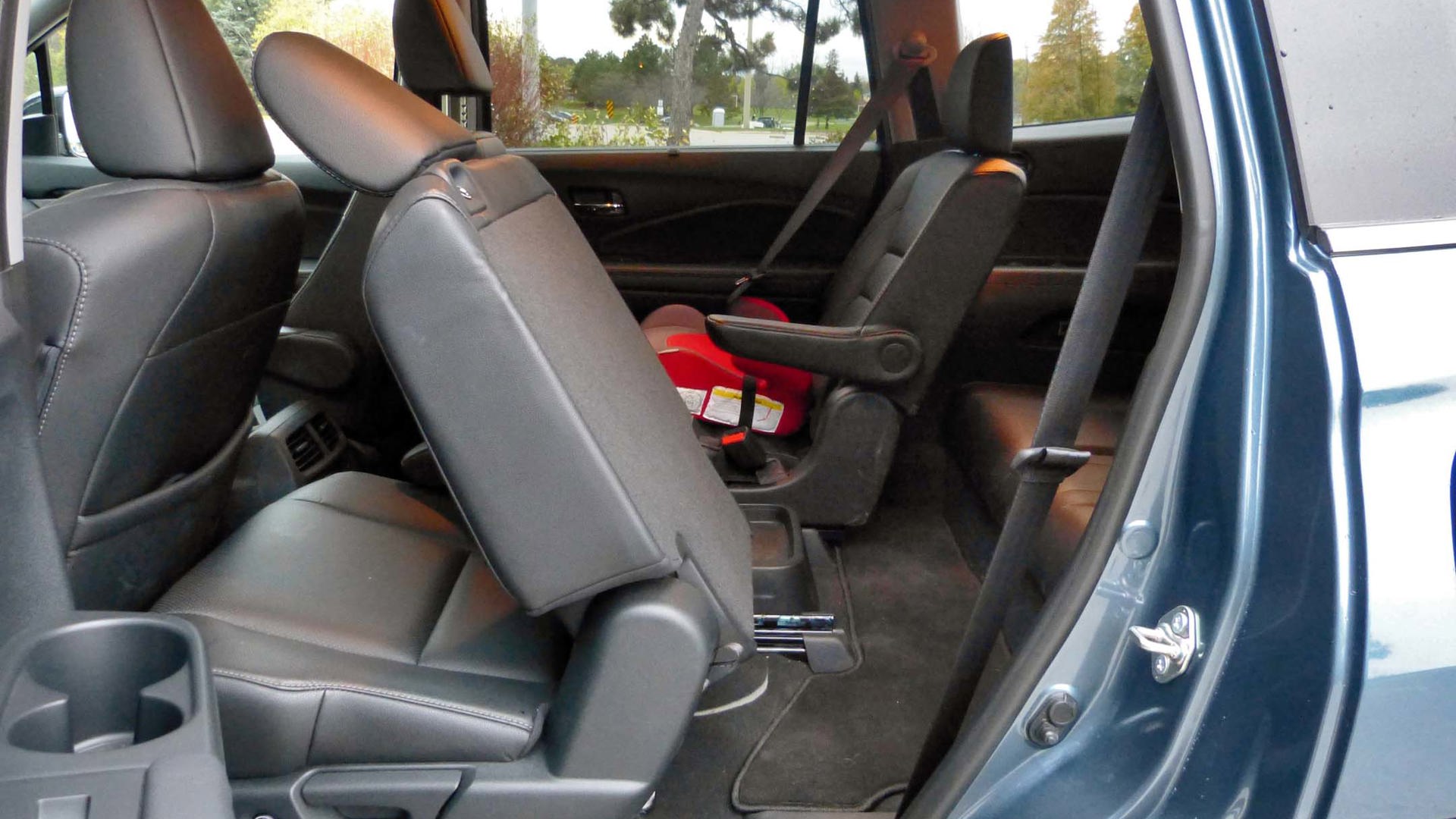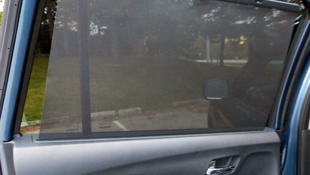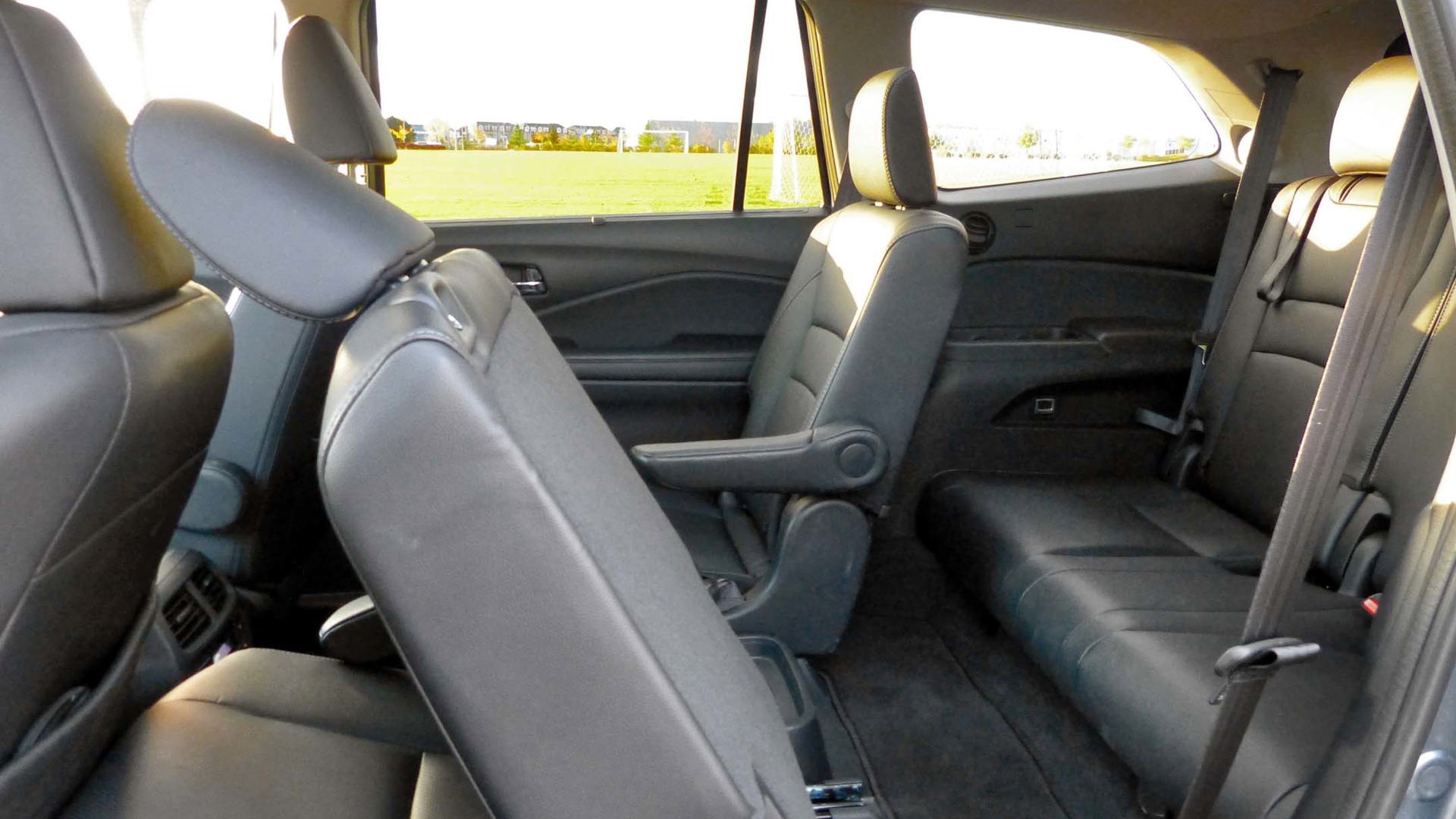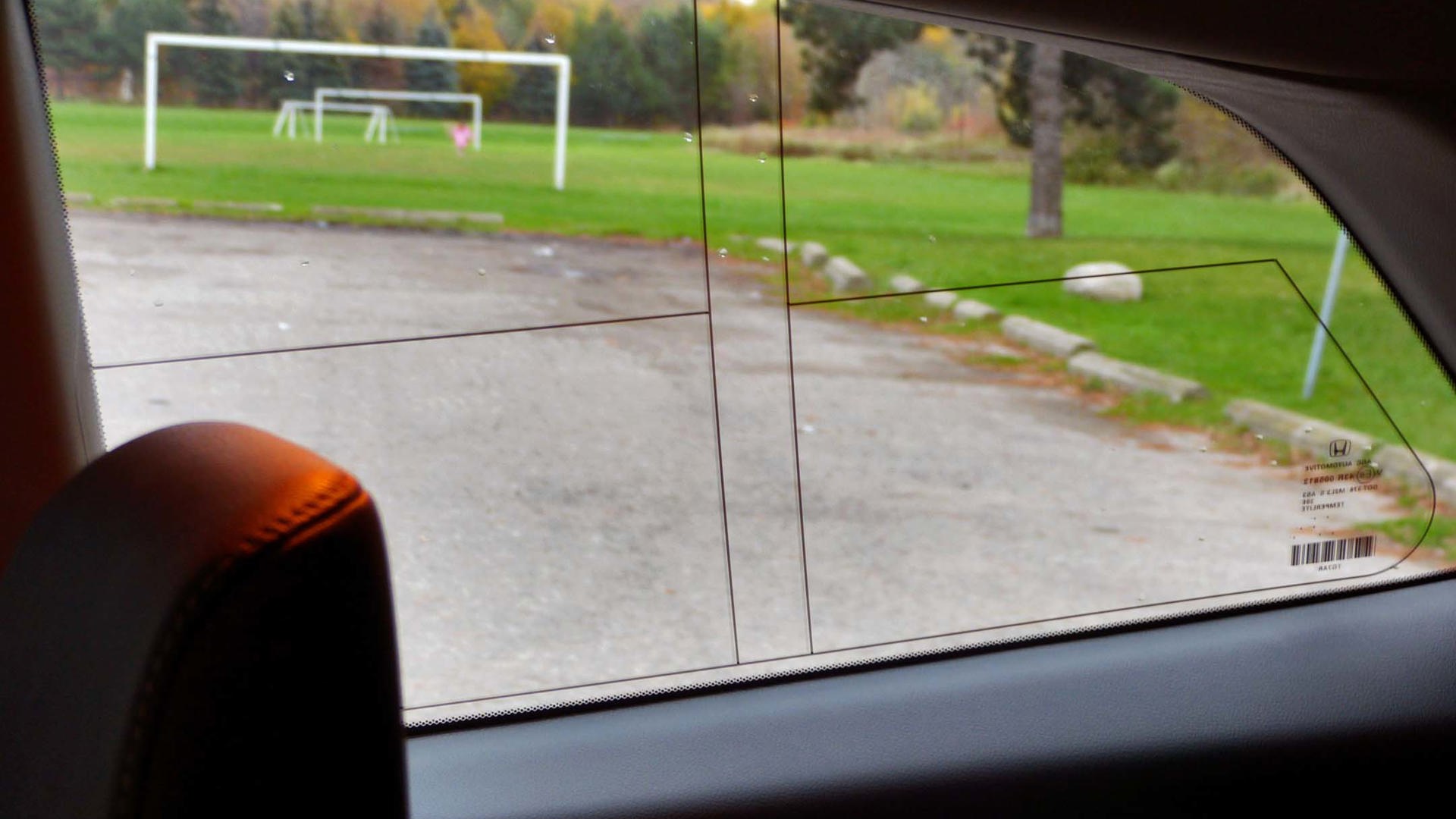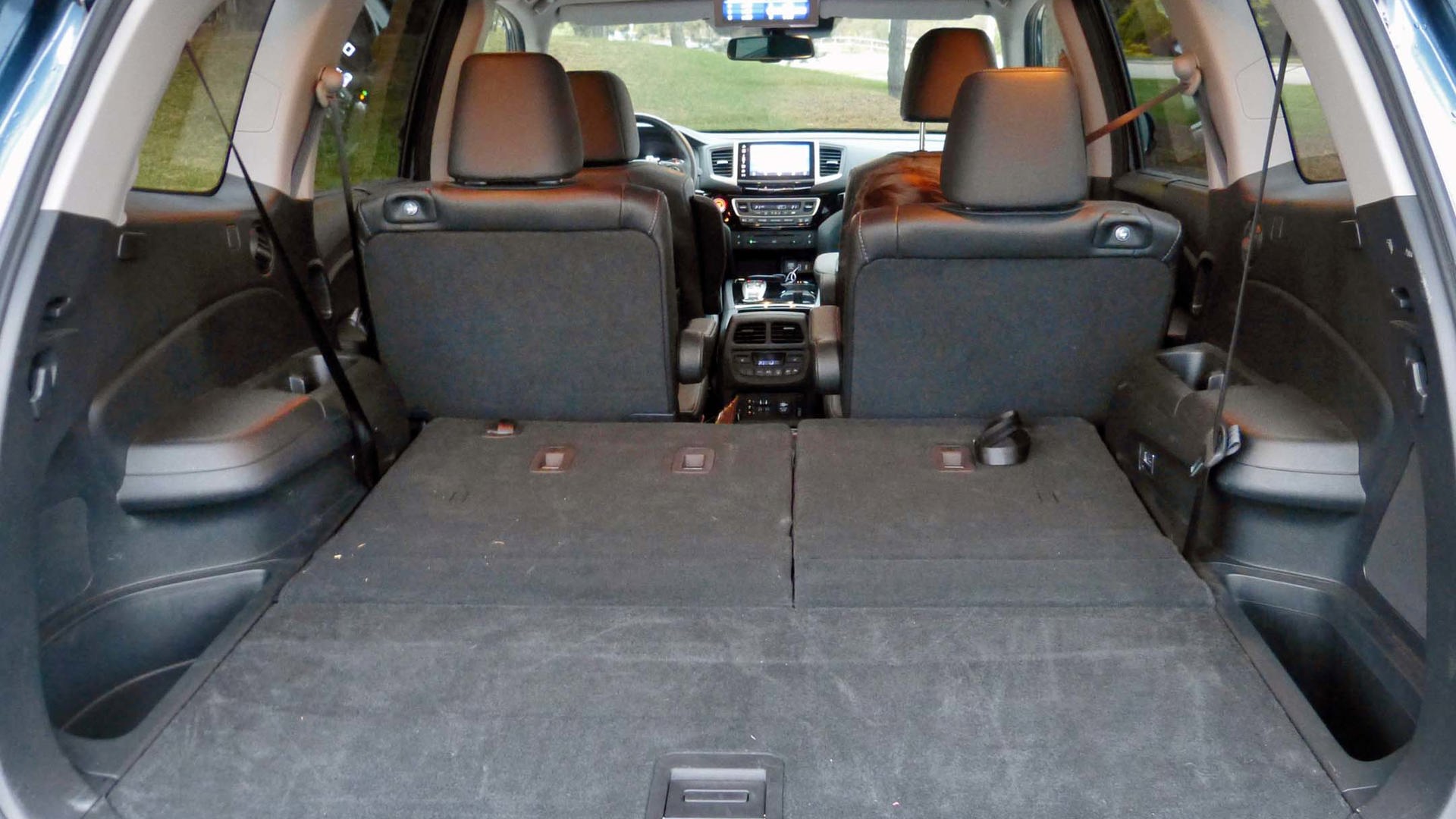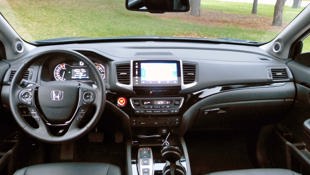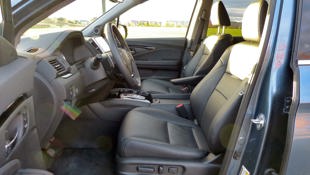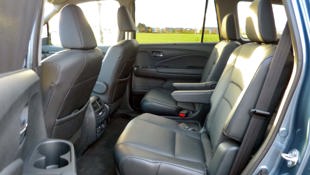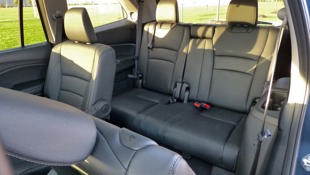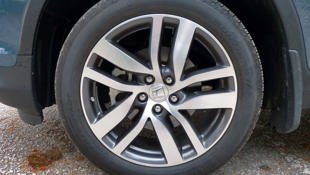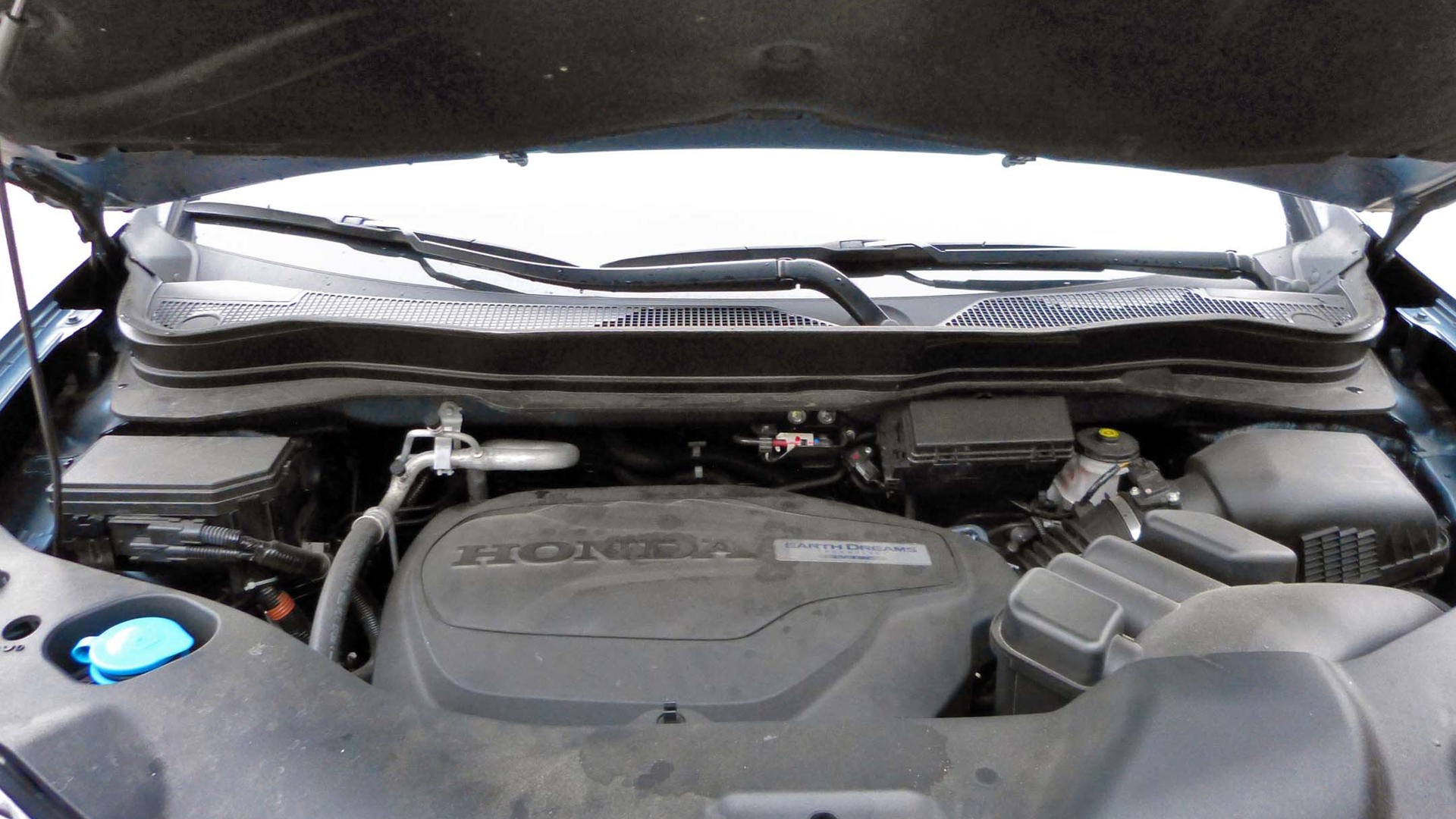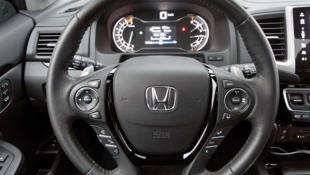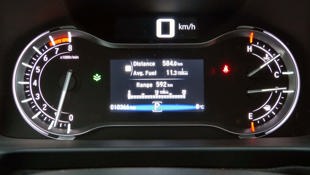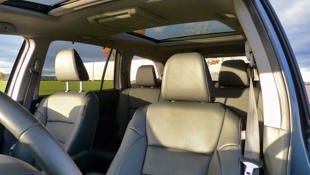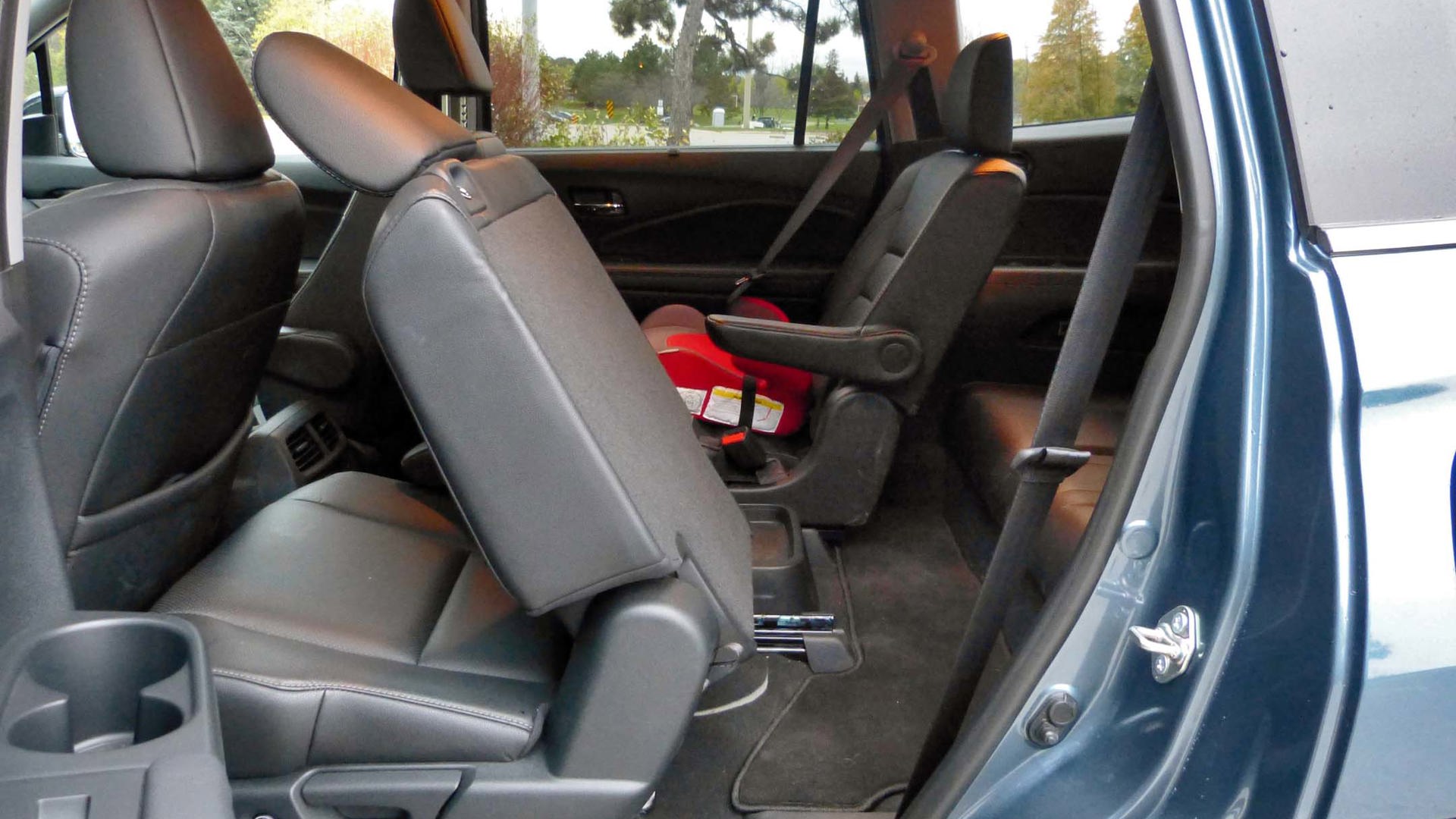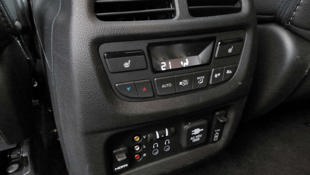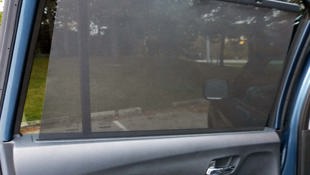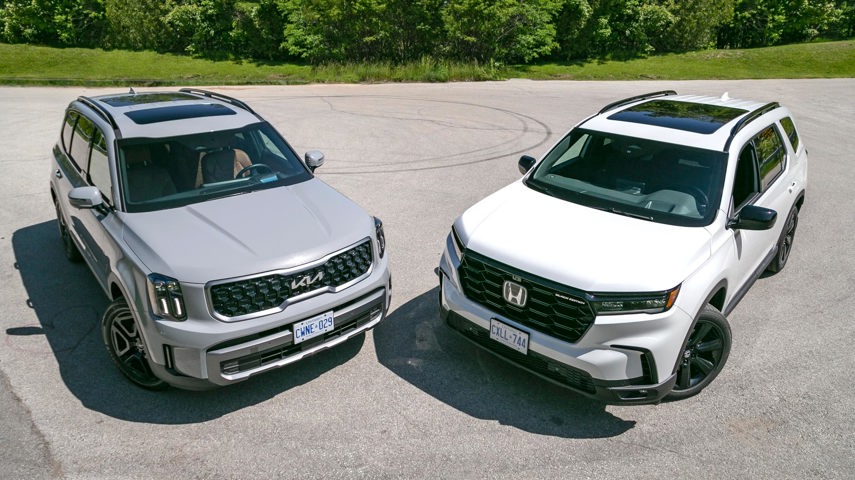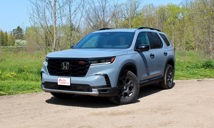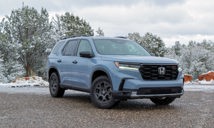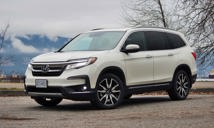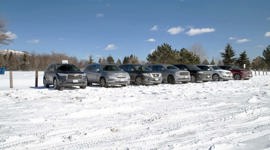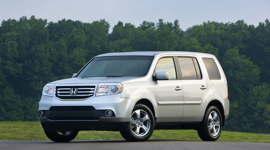 AutoTrader SCORE
AutoTrader SCORE
-
STYLING7/10
-
Safety7/10
-
PRACTICALITY9/10
-
USER-FRIENDLINESS7/10
-
FEATURES8/10
-
POWER7/10
-
COMFORT7/10
-
DRIVING FEEL6/10
-
FUEL ECONOMY6/10
-
VALUE7/10
That Honda makes very good automotive conveyances has rarely been in doubt. The ability of the Japanese marque to package its cars and maximize space is unquestioned – especially when it comes to the company’s SUV lineup.
Third-row occupants have been considered carefully, right down to anti-fog elements in the rearward windows, so the kids or in-laws back there can see out.
Which is why the Pilot is such a good option for a growing family. The three-row SUV is about as competent and comfortable a family hauler as you can get this side of $60,000.
The $53,315 as-tested 2017 Honda Pilot Touring features a 3.5L V6 and a nine-speed gearbox.
This unit gets up and going surprisingly well once you get past the initial inertia. There’s a few moments of noise and recalcitrance from the powerplant and then a surge. One imagines the engine saying, “Oh fine! If you want acceleration I’ll give you acceleration!” You’ll hit 6,000 rpm before all 280 hp is on deck, and even the 262 lb-ft of torque takes 4,700 rpm to muster its courage.
I will admit I expected better fuel economy than the 11.3 L/100 km I averaged over a week of city driving, but then again I did completely forget about the large green “Econ” button hidden behind the steering wheel on the left-hand side of the dash. Never mind, even without Econ mode engaged the engine had automatic stop-start activated, and it’s a smooth, unobtrusive system I didn’t mind using. Official ratings are 12.4/9.3/11.0 L/100 km city/highway/combined for this 1,978 kg rig.
Cabin storage is typically spectacular in Honda products and it’s the same here in the front row. The configurable, super-deep storage bin in the console is great for storing gear. All three rows have ample cup holders, trays and bins to store stuff. Which is great, until you have to empty all of your daughter’s “art” from the various cubby holes….
Captain’s chairs in the second row make for easy access to the rear, but even without the gap in the middle, the Pilot’s second row slides easily and quickly out of the way, creating a large, open pathway to the back.
Third-row occupants have been considered carefully, right down to anti-fog elements in the rearward windows, so the kids or in-laws back there can see out.
The Pilot is wide, really wide. This is a positive when you want to put three kids in booster seats across the back row (and for the record, I did), but a negative when driving down narrow streets. I found myself checking the passenger-side mirror as a reference when negotiating rows of parked cars, not something I usually need to do in any mainstream car.
On top of that, the back-up camera seems to make the Pilot seem wider than it is. Mostly this is due to the guidelines being drawn way too far apart. The superimposed lines on the camera would tell me I was over both lines in the bay, when that is a) clearly not possible, and b) I was centred perfectly in the middle.
Out on the roads I appreciated the armrest on the driver’s seat (there’s one on all four seats in the front two rows, in fact), while my wife appreciated that the armrest could be folded up and out of the way.
Honda’s push-button gear shifter is likely to polarize many, but I actually like it. It declutters the console and opens up the space between the driver and passenger. I even found it interesting to use – in a positive way. My only gripe? The buttons sometimes refused to accept my request for reverse, or drive. My family tells me this is a symptom of my impatience, not of the car’s shortcomings, but I disagree. If I tell you I want reverse, and you’re my car, bloody well give me reverse. Immediately.
This same sentiment is true of restaurants that don’t bring the card machine along with the bill, by the way. It’s 2017, everyone pays with a card, and nobody has time to wait for waiters, or gearboxes to figure out simple tasks.
Handling in the Pilot is ponderous. The wide, tall, and softly sprung Honda is not a fan of corners, but it does take the road and soak it up with praiseworthy efficiency. The Pilot is built to carry you and your loved ones (and their loved ones) around in comfort, and it does it well. Try to add haste to the equation only if you like watching the back-seat folk play “corners”.
To tow anything worthwhile you’d need the $2,092 5,000 lb towing package, which might be a requirement if you like camping.
Because this is a Honda review, I will tell you that Android Auto/Apple CarPlay is a great addition, and a necessary one, because the rest of Honda’s usual infotainment system is difficult-to-use, frustrating, and slow. New Hondas have volume knobs and tuning knobs, which is a very positive step.
But if I stopped there I’d be doing a disservice. Being fully loaded meant out tester was fitted with the rear-seat infotainment system, and that system is actually pretty great to use. My daughter came to grips with the remote control in record time, and we even discovered that if she was listening to a DVD, or Bluetooth audio, FM radio, or Sirius XM in her headset, I could listen to something else in the front speakers. You can’t both listen to different Sirius channels, but there’s only so much you can achieve.
Interestingly, the top-tier Touring gets Honda’s blind-spot monitoring system, which means it is the only Pilot trim that doesn’t get Lanewatch. I prefer Lanewatch myself, mostly because where I turn into my daughter’s school there’s a bike path just far enough off the road to be hard to see with my naked eye. Lanewatch usually helps me monitor that lane before I turn across it. You may prefer having the blind-spot monitor on both sides.
All Pilots get lane-keep assist, adaptive cruise control and forward collision warning. Touring levels also get automatic LED headlights, a panoramic sunroof, and ventilated front seats, along with a few other goodies.
All of which, frankly, you could skip. Which means for under $50,000 you can get into a Pilot EX-L Res and be extremely well-featured, plus still have the whole family happy.
If you’re a box-ticker though, the Touring is a solid buy. And if you’ve got a pile of kids, or a pile of their friends, to haul around, you can rest assured they’ll be happy and comfortable out back.
| Engine Displacement | 3.5L |
|---|---|
| Engine Cylinders | V6 |
| Peak Horsepower | 280 hp @ 6,000 rpm |
| Peak Torque | 262 lb-ft @ 4,700 rpm |
| Fuel Economy | 12.4/9.3/11.0 L/100 km L/100 km city/hwy/cmb |
| Cargo Space | 510/1,557/3,072 L behind third-/second-/front-row seats |
| Model Tested | 2017 Honda Pilot Touring |
| Base Price | $51,490 |
| A/C Tax | $100 |
| Destination Fee | $1,725 |
| Price as Tested | $53,315 |
|
Optional Equipment
None
|
|
